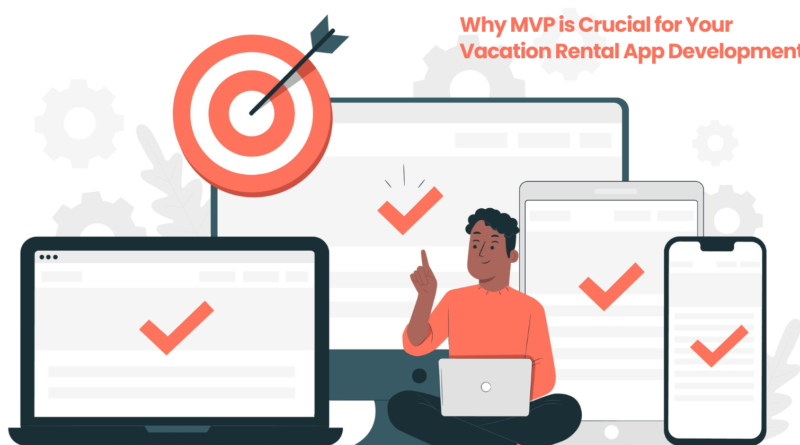Why MVP is Crucial for Your Vacation Rental App Development
The vacation rental industry is booming. Platforms like Airbnb, Vrbo, and Booking.com have transformed how people travel, offering unique stays at competitive prices. If you’re an entrepreneur or startup looking to break into this market, you might be tempted to build a full-featured app right away. But here’s the catch—launching a fully developed product without testing the waters can be risky and expensive.
This is where the Minimum Viable Product (MVP) approach comes in. An MVP allows you to validate your idea, attract early users, and refine your product before investing heavily in development. In this guide, we’ll explore why an MVP is essential for your vacation rental app, what features to include, and how to avoid common pitfalls. See Demo: https://zipprr.com/airbnb-clone/
What is an MVP in App Development?
An MVP is the most basic version of your product that includes only the core features needed to solve a key problem for users. It’s not about delivering a perfect app—it’s about launching quickly, gathering feedback, and improving over time.
How is an MVP Different from a Full Product?
-
MVP: Focuses on essential features, minimal design, and quick launch.
-
Full Product: Includes advanced functionalities, polished UI/UX, and scalability.
Many successful companies started with an MVP:
-
Airbnb began as a simple website offering air mattresses in a living room.
-
Uber launched as a basic app connecting riders with drivers in San Francisco.
By starting small, these companies validated demand before scaling up.
Why Should You Build an MVP for a Vacation Rental App?
Validate Your Business Idea with Minimal Risk
Before spending thousands on development, you need to know:
-
Is there real demand for your app?
-
Will users actually book rentals through your platform?
An MVP lets you test these questions with real users before committing to a full build.
Save Time and Development Costs
Building a full-featured vacation rental app can take months (or years) and cost a fortune. An MVP helps you:
-
Avoid unnecessary features that users don’t need.
-
Allocate budget wisely by focusing on core functionality first.
Attract Early Adopters and Investors
A working prototype is more convincing than just an idea. With an MVP, you can:
-
Show investors that your concept has potential.
-
Build a loyal user base that provides valuable feedback.
Faster Time-to-Market
The vacation rental industry is competitive. Launching an MVP quickly allows you to:
-
Gain first-mover advantage in niche markets.
-
Start generating revenue while improving the app.
Reduce Technical and Market Risks
What if users don’t like your app? What if there’s a critical bug? An MVP helps you:
-
Identify flaws early before scaling.
-
Pivot your strategy based on real user data.
Key Features to Include in a Vacation Rental MVP
Your MVP should focus on must-have features that solve the core problem: helping travelers find and book rentals easily.
Essential Features:
✅ User Registration & Profiles – Simple sign-up/login (email, social login).
✅ Property Listings – Search, filters (price, location, amenities), and basic details.
✅ Booking & Reservations – Calendar availability and instant booking.
✅ Payment Gateway – Secure transactions (Stripe, PayPal, etc.).
✅ Reviews & Ratings – Build trust with guest feedback.
✅ Admin Dashboard – Manage properties, bookings, and users.
Advanced Features (For Later Stages):
🔹 AI-based recommendations
🔹 Multi-language & currency support
🔹 Advanced analytics for hosts
Pro Tip: Start with the essentials, then expand based on user demand.
Steps to Develop an MVP for a Vacation Rental App
Step 1: Market Research & Competitor Analysis
-
Study Airbnb, Vrbo, and local competitors.
-
Identify gaps (e.g., better pricing, unique stays, niche markets).
Step 2: Define Core Features
-
Prioritize features that solve the biggest pain points.
-
Use a MoSCoW Method (Must-have, Should-have, Could-have, Won’t-have).
Step 3: Choose the Right Tech Stack
-
Frontend: React Native (cross-platform), Flutter (for fast development).
-
Backend: Node.js, Firebase (for scalability).
-
Database: PostgreSQL (structured data), MongoDB (flexibility).
Step 4: Design a User-Friendly UI/UX
-
Keep it simple and intuitive.
-
Focus on seamless booking flow.
Step 5: Develop & Test the MVP
-
Use Agile methodology (build, test, iterate).
-
Conduct beta testing with real users.
Step 6: Launch & Gather Feedback
-
Release to a small audience first.
-
Collect feedback via surveys, reviews, and analytics.
Step 7: Iterate & Scale
-
Add features based on user demand.
-
Optimize performance and expand marketing.
Common Mistakes to Avoid When Building an MVP
- Overloading with Features – Stick to the essentials.
- Ignoring User Feedback – Listen to early adopters.
- Choosing the Wrong Tech Stack – Pick scalable solutions.
- Skipping Testing – Fix bugs before full launch.
- Underestimating Marketing – Even the best app needs users.
Conclusion
Building a vacation rental app starts with a smart approach—launching an MVP first. By focusing on core features, you validate demand, save costs, and reduce risks before scaling. Early user feedback helps refine your product, ensuring it meets real needs. Whether you’re a startup or an entrepreneur, an MVP gives you the best chance for success.

